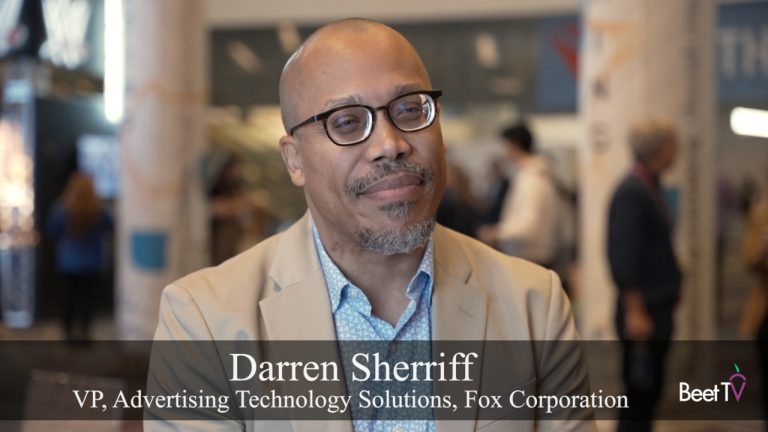
LAS VEGAS — Despite privacy regulation and the deprecation of digital identifiers, publishers and ad buyers are finding new ways to tap into their audiences.
In fact, “clean room” technology is allowing them to collaborate with audience data in a way that doesn’t require moving it.
In this video interview with Beet.TV, Darren Sherriff, VP, Advertising Technology Solutions, Fox Corporation, says some clean room solutions are better than others, and he says the emerging category is now a must-have.
Happy lawyers
Clean room technology allows media buyers and sellers to match their consumer data without directly sharing it with each other – something which could breach the growing number of privacy laws.
Fox’s Sherriff says clean rooms are now “essential” – but not all are equal.
“It’s funny – when you look at a lot of clean rooms, you look behind the scenes and the first step is ‘(you have to) move your data over to our clean room technology’,” he quips. “To me, that’s like the starting point of what we’re trying to get away from.
“I’ve seen a lot of new technologies out there that allow you to keep the data in the various different data warehouses … and be able to layer on some of the clean room technology on top of that, to be able to share that data without moving it.
“That is the key thing. Without moving, it stays within our walls. Our legal team is very happy to hear that.”
How it works
One key aspect of clean room technology is the use of “data de-identification” techniques, which are used to remove personally identifiable information (PII) from data sets before they are shared or analyzed.
This can include things like removing names, addresses, and other identifying information from data sets, or using pseudonyms or other codes to replace identifying information. The goal is to make it impossible for anyone to identify an individual from the data, even if they were to try.
Another important aspect of clean room technology is the use of strict access controls and audit trails, which are used to ensure that only authorized individuals have access to the data and that all access to the data is logged and tracked.
Uses are growing
At Fox, Sherriff has particular uses for the technology:
- Aggregation: “Taking our internal data from the various sources that we have and bringing it all together.”
- Partner working: “A lot of holding companies have invested in their own data companies. They have their own ID spaces that they want to bring to the mix, and they want to see the return on investment for their IDs.”
He says clean room tech enables “permissioning” of data, including rules giving granular access to different clients.
Bringing all that data into a clean room and being able to look at those analytics, I think, is incredibly helpful for a client.
But Sherriff says clean room buyers and users need to kick vendors’ tyres.
“Clean rooms are only as good as the participation you have,” he says. “So, if you are pitching me very hard and none of my agency partners are there, none of my distribution partners are there … if no-one’s playing in your sandbox, I can’t really do much with it.”
You’re watching “Clean Rooms: Collaboration Goes Mainstream,” a Beet.TV Leadership Series produced at CES 2023, presented by Habu. For more videos from this series, please visit this page. For all of our coverage from CES 2023, please click here.